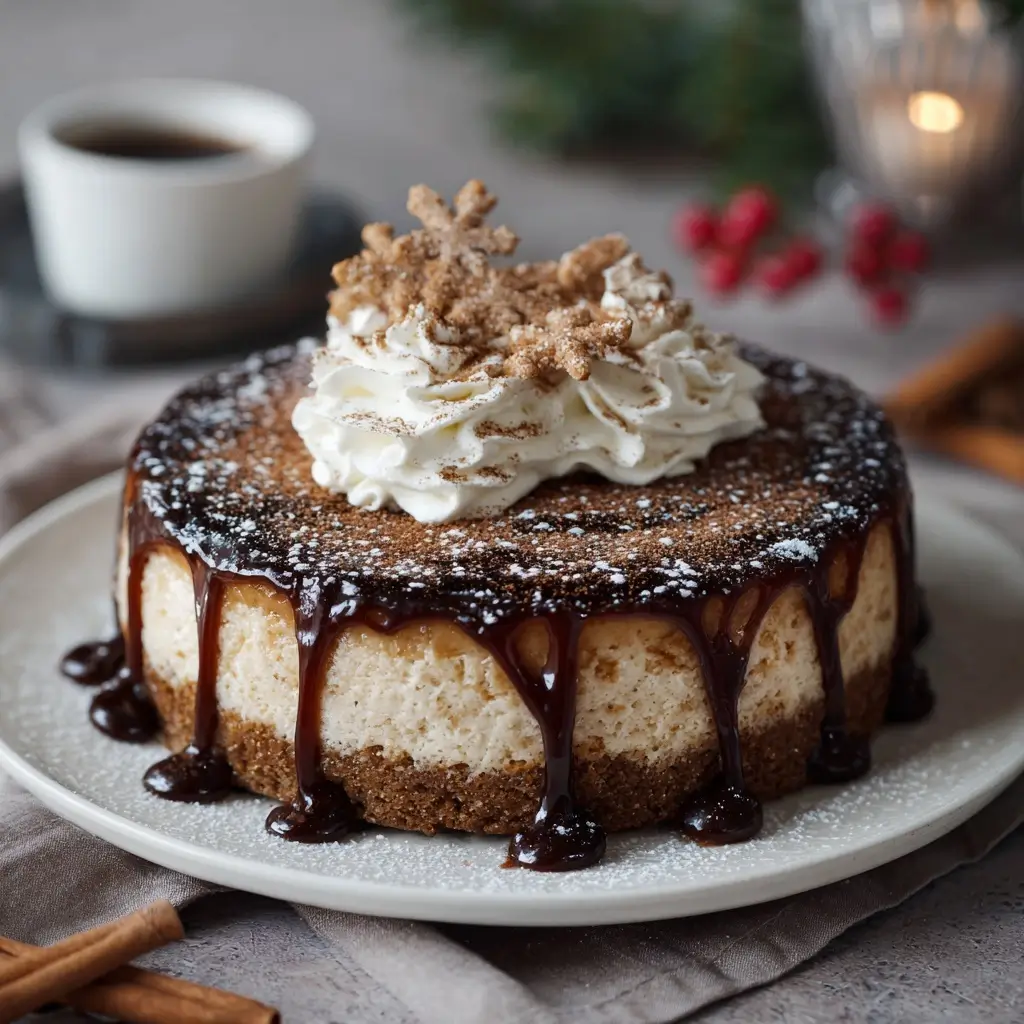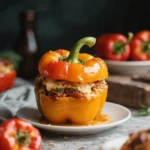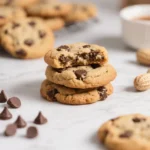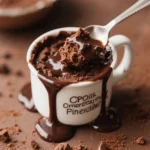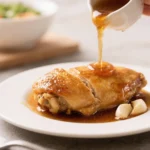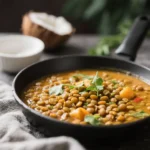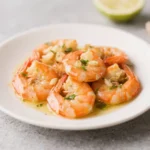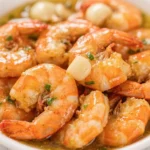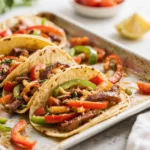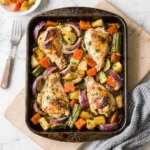Introduction
Gingerbread cheesecake is a decadent fusion of two beloved desserts: the spiced warmth of classic gingerbread and the creamy richness of New York-style cheesecake. This dessert brings together the nostalgic flavors of the holiday season—molasses, cinnamon, ginger, cloves, and nutmeg—with the luxurious texture of a velvety smooth cheesecake. Whether you’re serving it at a festive gathering or enjoying a slice with a cup of tea on a cozy winter evening, this gingerbread cheesecake promises to delight your taste buds with every bite. It’s not just a dessert; it’s an experience that combines tradition, comfort, and indulgence in one stunning, golden-brown masterpiece.
The History
The roots of gingerbread can be traced back to medieval Europe, where honey-sweetened spiced breads were popular as early as the 10th century. By the 13th century, gingerbread began appearing in fairgrounds and festivals across Germany, France, and England, often intricately decorated and shaped into figures—giving rise to the famous gingerbread man. Over time, molasses replaced honey in many recipes, especially in American versions developed during the colonial era, due to its lower cost and deeper flavor profile.
Meanwhile, cheesecake has ancient origins, with the earliest known version made by the Greeks using simple ingredients like cheese, honey, and flour. The Romans later adapted it, spreading variations throughout their empire. In modern times, particularly in the 20th century, American bakers refined the recipe into the rich, cream-cheese-based dessert we know today.
The combination of gingerbread and cheesecake is a relatively recent culinary innovation, likely emerging in the late 20th or early 21st century as part of a broader trend toward flavor fusion and seasonal reinterpretations of classic desserts. Bakers began experimenting with spiced crusts and swirled fillings, eventually leading to the creation of the gingerbread cheesecake—a harmonious blend of historical traditions and contemporary baking artistry.
Ingredients Breakdown
Graham Cracker Crust Base:
Graham cracker crumbs form the structural foundation of the crust, offering a slightly sweet, toasty base. They are combined with melted butter to bind the crumbs and create a firm, cohesive layer when pressed into the pan and chilled.
Gingerbread Spices (in Crust):
Ground ginger, cinnamon, allspice, and cloves lend warmth and depth to the crust, echoing traditional gingerbread cookie flavors. These spices not only enhance aroma but also provide subtle heat and complexity.
Molasses:
A key ingredient in both the crust and filling, molasses contributes a robust, slightly bitter-sweet flavor that defines gingerbread. Its dark color adds richness, while its viscosity helps bind ingredients and maintain moisture.
Cream Cheese:
Full-fat cream cheese is essential for a smooth, dense, and creamy texture. It should be at room temperature before mixing to ensure no lumps remain in the batter. Brands like Philadelphia are preferred for consistency and flavor.
Sour Cream:
Sour cream adds tanginess, balances sweetness, and enhances creaminess. It also helps prevent cracking during baking and contributes to a silky mouthfeel.
Granulated Sugar:
Used to sweeten the filling, sugar also helps aerate the mixture when beaten with cream cheese, resulting in a lighter texture. It plays a role in browning the surface slightly during baking.
Eggs:
Eggs act as a binder and leavening agent. They help set the cheesecake structure during baking. Room-temperature eggs integrate more smoothly and reduce the risk of curdling or overmixing.
Vanilla Extract:
Pure vanilla extract enhances overall flavor complexity, rounding out the sharpness of spices and adding a floral sweetness.
Heavy Cream (optional):
Sometimes added to enrich the filling further, heavy cream gives the cheesecake an ultra-luxurious texture and improves its melt-in-the-mouth quality.
Additional Flavor Enhancers:
Some recipes include brown sugar for extra caramel notes, espresso powder to deepen molasses flavor, or orange zest to brighten the spice blend.
Step-by-Step Recipe
- Prepare the Pan: Preheat your oven to 325°F (163°C). Grease a 9-inch springform pan thoroughly, then wrap the bottom and sides tightly with aluminum foil to prevent water from seeping in during the water bath.
- Make the Gingerbread Crust: In a medium bowl, combine 1 ½ cups graham cracker crumbs, ¼ cup granulated sugar, 1 teaspoon ground ginger, ½ teaspoon ground cinnamon, ¼ teaspoon ground cloves, ¼ teaspoon allspice, and a pinch of salt. Stir in 6 tablespoons melted unsalted butter and 1 tablespoon molasses until the mixture resembles wet sand.
- Press and Chill the Crust: Transfer the mixture to the prepared pan. Press firmly and evenly into the bottom using the back of a spoon or a flat-bottomed glass. Bake for 8–10 minutes until fragrant and set. Remove and let cool completely while preparing the filling.
- Prepare the Filling: In a large mixing bowl, beat 4 packages (8 oz each) of softened cream cheese on medium speed until smooth and creamy, about 2 minutes. Add 1 cup granulated sugar and continue beating until well incorporated. Scrape down the sides of the bowl.
- Incorporate Sour Cream and Flavorings: Add 1 cup sour cream, 1 teaspoon vanilla extract, 2 tablespoons molasses, and the same spice blend used in the crust (1 tsp ginger, ½ tsp cinnamon, etc.). Mix until fully combined and smooth.
- Add Eggs: Add 4 large eggs one at a time, mixing on low speed after each addition just until blended. Do not overmix—this prevents air bubbles and reduces cracking.
- Assemble and Bake: Pour the filling over the cooled crust. Smooth the top with a spatula. Place the springform pan inside a larger roasting pan. Fill the outer pan with hot water halfway up the sides of the springform (water bath).
- Bake Slowly: Carefully transfer to the oven. Bake for 60–75 minutes, or until the edges are set but the center still jiggles slightly when gently shaken.
- Cool Gradually: Turn off the oven, crack the door open slightly, and let the cheesecake cool inside for 1 hour. Then remove and cool completely on a wire rack.
- Chill Overnight: Cover and refrigerate for at least 8 hours, preferably overnight, to allow flavors to meld and texture to firm up.
- Serve: Run a knife around the edge before releasing the springform. Garnish with whipped cream, candied ginger, or a drizzle of molasses if desired.
Tips
- Room Temperature Ingredients: Always use room-temperature cream cheese, sour cream, and eggs. Cold ingredients lead to lumpy batter and uneven texture.
- Avoid Overmixing: Once eggs are added, mix only until just combined. Overbeating introduces too much air, which can cause cracks during baking.
- Water Bath is Essential: A water bath (bain-marie) ensures gentle, even heat distribution and maintains moisture, preventing drying and cracking.
- No Peek Policy: Resist opening the oven door during baking. Sudden temperature changes increase the risk of surface cracks.
- Cool Gradually: Letting the cheesecake cool slowly in the turned-off oven minimizes thermal shock, which can cause sinking or cracking.
- Use a Springform Pan Correctly: Ensure the latch is secure and double-wrap with foil to avoid leaks. Consider placing the wrapped pan on a towel in the water bath for stability.
- Chill Thoroughly: Patience pays off. A minimum of 8 hours chilling time allows the cheesecake to set properly and develop full flavor.
- Clean Cuts: For neat slices, dip a sharp knife in hot water and wipe clean between cuts.
Variations and Customizations
- Gingersnap Crust: Replace graham crackers with crushed gingersnap cookies for a more intense ginger flavor and chewier texture.
- Swirl Technique: Create visual appeal by swirling additional molasses or a cinnamon-ginger paste into the batter before baking.
- Gluten-Free Option: Use gluten-free graham crackers or almond flour mixed with spices and butter for a grain-free crust.
- Dairy-Free Version: Substitute cream cheese and sour cream with high-quality plant-based alternatives like those made from cashews or soy.
- Vegan Adaptation: Combine soaked cashews, coconut cream, molasses, and agar-agar for a completely vegan no-bake gingerbread cheesecake.
- Mini Cheesecakes: Make individual servings in muffin tins lined with paper liners for easy portion control and festive presentation.
- Chocolate Twist: Add cocoa powder to the crust or swirl melted dark chocolate through the filling for a mocha-ginger fusion.
- Fruit Topping: Top with poached pears, stewed apples, or spiced cranberries for a fruity contrast.
- Alcohol Infusion: Add a splash of bourbon, rum, or spiced cider to the filling for adult-friendly depth.
- Spice Level Adjustment: Tailor the spice blend to preference—add black pepper or cardamom for complexity, or reduce cloves for milder flavor.
Health Considerations and Nutritional Value
Gingerbread cheesecake is a rich, calorie-dense dessert best enjoyed in moderation. A typical slice (1/12 of a 9-inch cake) contains approximately 450–550 calories, with significant contributions from fat (especially saturated fat from cream cheese and butter), sugar, and carbohydrates.
Key Nutrients:
– Calcium: From dairy products like cream cheese and sour cream.
– Protein: Moderate amounts from eggs and dairy.
– Iron and Antioxidants: Molasses is a source of iron, magnesium, and antioxidants.
– Ginger Benefits: Ginger has anti-inflammatory and digestive properties, though present in small quantities here.
Considerations:
– High sugar content may not suit diabetics or low-carb diets.
– Lactose-intolerant individuals may need dairy substitutes.
– Gluten-sensitive eaters should opt for certified gluten-free crust ingredients.
– Portion control is recommended for heart health due to saturated fat levels.
While not a health food, this dessert can be part of a balanced diet when consumed occasionally and mindfully. Lighter versions using reduced-fat cheese, natural sweeteners like maple syrup, or yogurt substitutions can offer healthier alternatives without sacrificing all the flavor.
Ingredients
For the Crust:
- 1 ½ cups graham cracker crumbs (about 10 full sheets)
- ¼ cup granulated sugar
- 1 tsp ground ginger
- ½ tsp ground cinnamon
- ¼ tsp ground cloves
- ¼ tsp allspice
- Pinch of salt
- 6 tbsp unsalted butter, melted
- 1 tbsp molasses
For the Filling:
- 32 oz (4 x 8 oz packages) full-fat cream cheese, softened
- 1 cup granulated sugar
- 1 cup sour cream, room temperature
- 2 large eggs + 2 egg yolks (or 4 whole eggs)
- 2 tbsp unsulphured molasses
- 1 tsp pure vanilla extract
- 1 tsp ground ginger
- ½ tsp ground cinnamon
- ¼ tsp ground cloves
- ¼ tsp allspice
- Pinch of salt
- Optional: ¼ cup heavy cream for extra silkiness
For Serving (Optional):
- Whipped cream
- Candied ginger slices
- Fresh berries
- Molasses drizzle
- Crushed gingersnaps
Directions
- Preheat oven to 325°F (163°C). Grease a 9-inch springform pan and wrap the outside securely with two layers of heavy-duty aluminum foil.
- In a medium bowl, mix all crust ingredients: graham cracker crumbs, sugar, spices, salt, melted butter, and molasses. Stir until uniformly moist.
- Press mixture firmly into the bottom of the pan using a flat-bottomed glass or measuring cup. Bake for 10 minutes. Remove and cool completely.
- In a large bowl, beat cream cheese on medium speed until smooth and fluffy (about 2 minutes). Add sugar and beat until incorporated.
- Reduce speed to low. Add sour cream, molasses, vanilla, spices, and salt. Mix until smooth. Scrape bowl as needed.
- Add eggs and egg yolks one at a time, mixing just until each is incorporated. Do not overbeat.
- Pour filling over cooled crust. Smooth the top with an offset spatula.
- Place springform pan in a large roasting pan. Fill roasting pan with hot water to reach halfway up the sides of the springform.
- Bake for 60–75 minutes. The edges should be set, and the center should wobble slightly when nudged.
- Turn off oven, crack door open with a wooden spoon, and let cheesecake sit for 1 hour.
- Remove from oven and water bath. Cool completely on a wire rack (about 2 hours).
- Cover loosely with plastic wrap and refrigerate for at least 8 hours, preferably 12–24 hours.
- Before serving, run a thin knife around the edge to loosen. Release the springform clamp and lift off the ring.
- Garnish as desired and serve chilled.
FAQ
Can I make gingerbread cheesecake without a water bath?
While possible, skipping the water bath increases the risk of cracks, uneven baking, and a drier texture. If you must skip it, place a pan of water on the rack below to add humidity.
Why did my cheesecake crack?
Common causes include overmixing, sudden temperature changes, undercooling, or overbaking. Using a water bath and cooling slowly helps prevent this.
Can I freeze gingerbread cheesecake?
Yes! Wrap tightly in plastic and foil. Freeze for up to 2 months. Thaw overnight in the refrigerator before serving.
How long does it last in the fridge?
Stored covered, it stays fresh for 5–7 days.
Can I use store-bought crust?
Yes, but homemade allows better spice control. If using pre-made graham crust, consider brushing the inside with melted butter and adding a pinch of ginger for flavor boost.
Is this recipe suitable for Passover or gluten-free diets?
With modifications—use gluten-free graham crackers or a nut-based crust—and ensure other ingredients comply with dietary restrictions.
Can I reduce the sugar?
You can reduce sugar slightly (by 2–4 tbsp), but doing so may affect texture and balance against the molasses’ bitterness.
What’s the best way to cut cleanly?
Dip a sharp knife in hot water, wipe dry, and slice. Clean between cuts for perfect edges.
Summary
Gingerbread cheesecake masterfully blends the aromatic spices and deep molasses flavor of traditional gingerbread with the creamy elegance of a classic cheesecake. This show-stopping dessert is perfect for holiday gatherings or anyone craving a warm, comforting treat with a luxurious twist.
